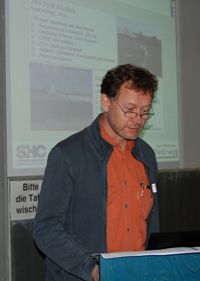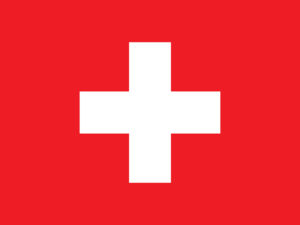IEA-SHC 43: On the Way to Harmonize Testing and Certification
November 2, 2009
 At the request of the US Solar Rating & Certification Corporation (SRCC), the International Energy Agency’s Solar Heating and Cooling Programme (SHC) formed Task 43, the “Solar Rating and Certification Procedure”.
At the request of the US Solar Rating & Certification Corporation (SRCC), the International Energy Agency’s Solar Heating and Cooling Programme (SHC) formed Task 43, the “Solar Rating and Certification Procedure”.
Photo: IEA SHC
When it comes to testing and certification, being a solar thermal manufacturer is definitely not easy: Both procedures have to be repeated in each region or country, in which you want to enter the market outside Europe. This not only slows down market introduction, but also increases the costs for any producer.
The newly formed task force 43 will discuss how to resolve discrepancies between and issues surrounding the different testing standards and their implementation. “This will create a technical foundation for certification bodies to consider accepting tests and certifications across borders, in order to lower barriers for solar heating and cooling products competing in global markets”, the task force writes on its website.
For example, whereas the SRCC standard requires using only one collector for sequential testing, test institutes in Europe allow the use of two identical collectors for parallel testing of 30-day stagnation and solar thermal efficiency. Listing other discrepancies between European and US testing procedures, SRCC’s director Les Nelson says: “The other significant differences are that European tests require a 4-hour rain spray test that is not used in the US, and the US test requires a ‘cold fill’ of a collector with water under stagnating conditions that is not required in European tests.”
The objective of the new IEA-SHC subtask A, “Collectors”, is to examine existing testing and certification procedures for low-temperature evacuated tube and flat-plate collectors, air heating collectors and medium- to high-temperature concentrating collectors. In contrast to that, Subtask B “Systems” will examine existing testing procedures for entire systems. The task force will have had its last meeting by June 2012.
The list of active participating institutions follows. the Coordinators also have “interest in
- Australia:
- Sustainability Victoria, Standards Australia Committee CS028,
Ken Guthrie, (ExCo member and ISO TC180) - Australian Office of the Renewable Energy Regulator
- Sarah Miller, CSIRO
- Wasim Saman, University of South Australia
- Sustainability Victoria, Standards Australia Committee CS028,
- Austria:
- Arsenal research, Roland Sterrer, Hubert Fechner and Josef Buchinger
- Canada:
- Natural Resources Canada, Doug McClenahan, (ExCo Chair)
- Exova Solar Test Facility, Alfred Brunger, Canada
- Germany:
- ITW University of Stuttgart , Harald Drueck (Subtask Leader) and Elke Streicher, Stefan Fischer
- Fraunhofer ISE, Stefan Mehnert, Korbinian Kramer
- ISFH Hannover, Nele Rumler
- Italy:
- ENEA, Vinood Sharma
- Portugal:
- INETI, Maria Joao Carvalho
- Spain:
- Centro Nacional de Energias Renovables, (Fabienne Sallaberry, Lourdes Ramirez Santigosa, Enric Mateu Serrats (Subtask Leader))
- Sweden:
- SP Sweden, Peter Kovacs
- United States:
- U.S. Department of Energy, Robert Hassett (ExCo member)
- Solar Rating and Certification Corporation Les Nelson (North American Co-Operating Agent), Mark Thornbloom, and Stephen Still
- Florida Solar Energy Center, James Huggins
- National Renewable Energy Laboratory, Tim Merrigan
- University of Wisconsin Solar Energy Laboratory, Sandy Klein
- Private Sector/Non-Governmental:
- ESTIF/Solar Keymark, Jan Erik Nielsen, (European Co-Operating Agent)
- Kingspan Renewables, Richard Pelan, United Kingdom
- Bosch Portugal, Tiago Mateus, Portugal
- Solar Twin, Ltd, Barry Johnson, United Kingdom
- Lumicum, Joakim Bystrom, Sweden
- Solar Experience, Stefan Abrecht, Germany
Further information: http://www.iea-shc.org/task43/index.html


